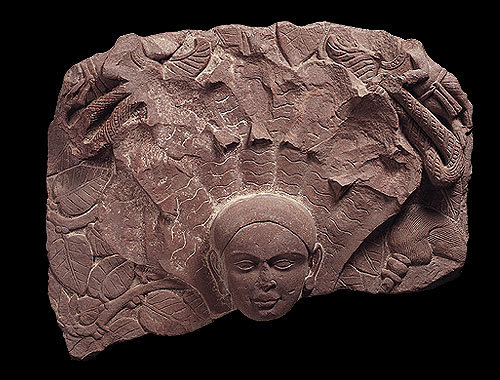

The tirthankara Parshvanatha, 2nd c. CE
Source: http://asianart.com/freschi/kusana_1.html
(downloaded July 2001)
"The tirthankara Parshvanatha. North India. Kusana dynasty - 2nd century. Sandstone. 95 x 65 cm."
Commentary by the Renzo Freschi Gallery, which was showing the piece:
"The art of Buddhism and Jainism shows, above all in the first centuries A. D., strong similarities and common elements in the two iconographies.... The gandharvas, the pipal branches, the fly-whisk and the naga (serpent) heads are the shared motifs, whereas the element that allows identifying the figure is the lack of the cranial bump (usnisa), a distinctive characteristic of the Buddha. Among the twenty-four Tirthankaras (Masters) of Jainism, Parsvanatha can be recognised by the presence of the nagas."